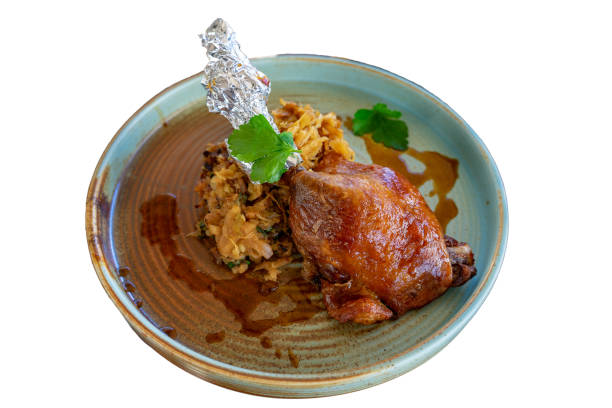You little goslings are coming… The 1 x 1 of Martinigans – from purchase to carving
Traditionally, the Martinigansl is served as a juicy roast on November 11th. But a classic roast goose is also a popular holiday meal at Christmas! We reveal how the perfect martini goose succeeds!
1) Buy your goose from species-appropriate husbandry!
This is not very difficult in Austrian supermarkets, because the origin of the goose has to be labeled. Geese from Austria are subject to the law and may not be fattened or plucked live. In Hungary or France, however, stuffing is quite common, so check carefully, especially with frozen goods. It should also be borne in mind that free-range geese have more space to roam. This keeps the meat firmer and not as fatty. So it is better to grab pasture geese from Austria, if possible directly from the farmer!

2) Invite guests!
A species-appropriate, well-reared goose can weigh up to 6 kg as a roast. Calculate 400-500 g of roast goose per person. A large goose can easily feed 10 people, especially when you consider the side dishes.
And if more guests have announced, no problem: two geese can also fit in a standard 60 cm wide oven at the same time! In this case, we recommend placing the geese directly on the grid and sliding a deep baking tray (dripping pan) underneath.
3) Pay attention to the trappings:
By the way, classic side dishes for Martinigansl are red cabbage and potato dumplings. But other dumplings also taste great and are ideal for soaking up the spicy gravy!
“So that was the core of the little goose” – whether and with what you fill your roast goose is up to you. A filling made of bread rolls is best, which can be refined with chestnuts, cranberries, or dried fruit, depending on taste. However, stuffed geese take longer to cook through!
4) Take your time!
This is especially true for a frozen goose. Two days before preparation, let the frozen goose thaw, preferably in the refrigerator or in a cool cellar, preferably in the packaging so that nothing dries out.
A succulent roast goose should also take about 60 minutes per kg of meat; if the goose is stuffed, add another 30 minutes. When roasting, pour the roast juice over it from time to time or, if necessary, add some stock, soup, or water so that the roast stays nice and juicy. If the goose is too dark, cover it with aluminum foil, reduce the temperature and increase the cooking time. When the roast is done, let it rest a bit before serving.
To determine when the martini goose is ready, pierce the leg with a fork or skewer. If the meat is still firm and the juice that comes out is still reddish, the goose is not done yet; if the juice is clear and the meat is tender, the goose is ready.

Geese roasted at a low temperature take a little longer, for 5 kg of goose you can count on 8 hours at 120 °C (convection). However, this keeps the meat particularly tender! At the end of the roasting time, switch on the grill and briefly grill the goose at 250 °C so that it turns golden brown and crispy on the outside.
5) Correct carving needs to be learned
But it’s not that difficult, whether with a knife or poultry shears. First cut off the wings (if they are fried and not used for the stock), separate the legs and cut them into thighs and drumsticks, then cut the breast open in the middle, starting from the stomach to the left and right of the breastbone, scrape the breast meat from the bones and remove the filling.
